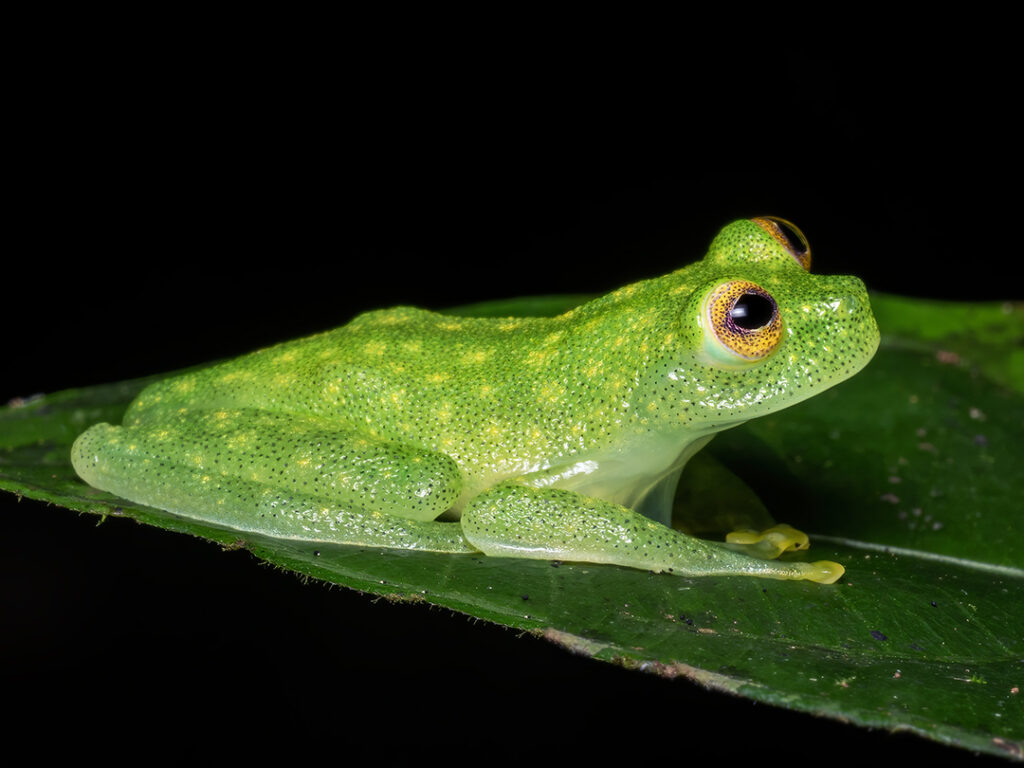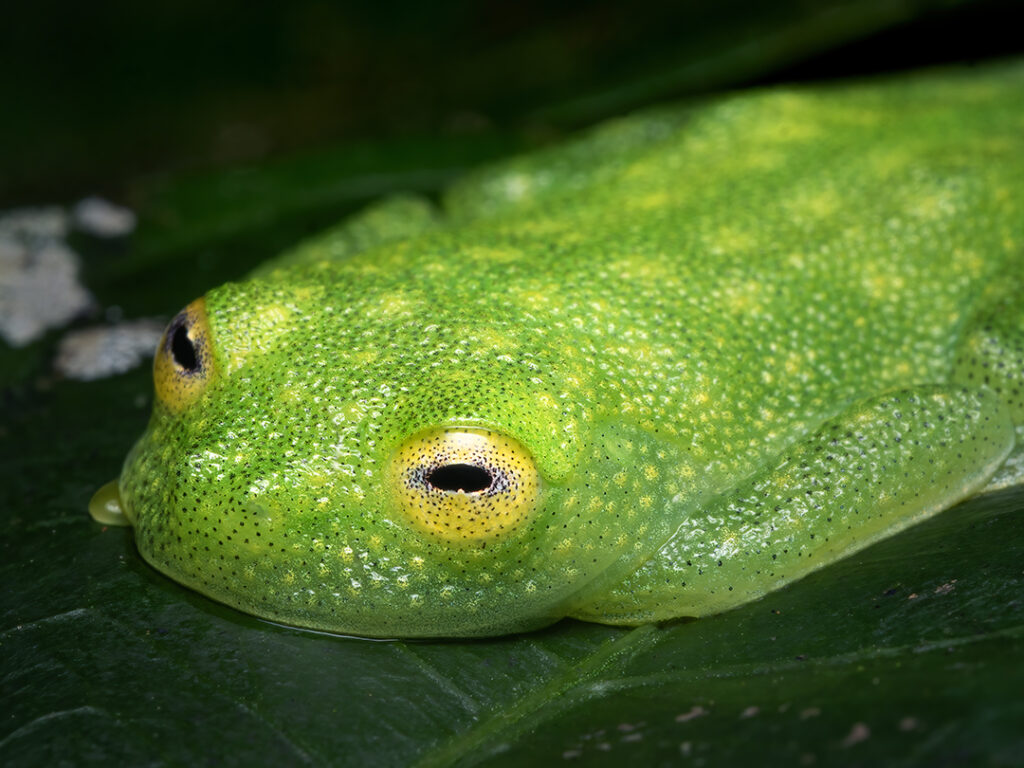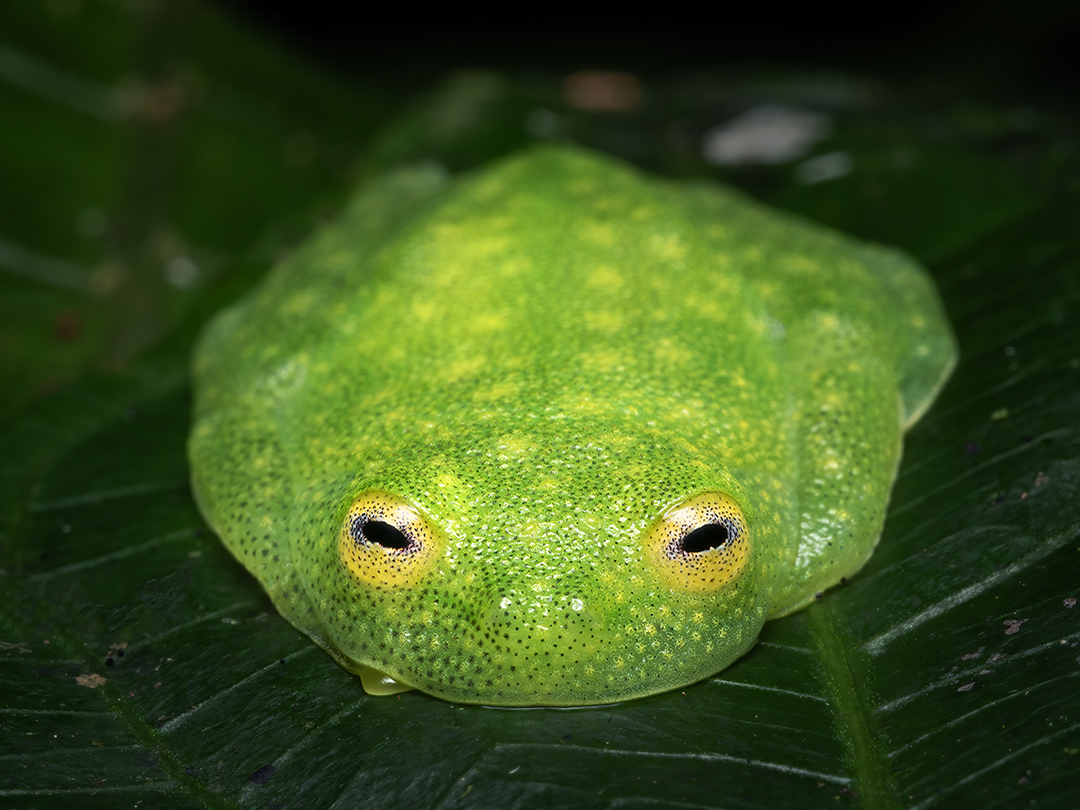Aliens of the Amazon.
It’s 10pm. I’m alone on an overnight camping trip in the Amazonian jungles of Manu Biological Station… and I’m thirsty.
I’ve been out on a night walk for the last few hours, enthralled by the myriad miracles of the natural world all around me – from agricultural ants herding aphids, to a pair of rather amorous arachnids. My headlamp is running on fumes by this point, but I can hear the running water of a nearby stream from my campsite.
Now, heading off-trail and cutting your way through dense jungle down a sharp incline at night when your headlamp is about to die is, generally, not the best idea in the world. But, as I previously mentioned, I’m thirsty… and what’s the worst that could happen?
Hmmm, don’t answer that.
After fifteen minutes of bush-bashing and an accidental encounter with some swarming insects that I didn’t hang around to take a closer look at, I arrive at the stream, fill up my bottle, and take a well-deserved drink.
But as I grab my machete and turn around to begin the steep climb back to camp, a shrill, high-pitched chirp suddenly pierces through the humid air. It’s quickly followed by another, and then another.
Surely not… They aren’t found here, are they?
I glance up, and directly above me, perched on a leaf, is a male Glass Frog – the first I’ve ever seen – screaming his lungs out in the hopes of attracting a female. After realising he’s accidentally attracted a six-foot primate instead, he makes himself as flat as possible, in the hopes that I won’t eat him. It’s an effective strategy, he was looking rather tasty up to that point.

The bellies of Glass Frogs are translucent – hence the name – and in certain species, you can even watch their heart beating. I’m desperate to photograph the underside, but my hands are covered in DEET, I don’t have anything transparent to put the frog on, and my headlamp is really struggling now.
I snap a few shots and reluctantly drag myself away. I want more, but I also want to spend the rest of the night in my tent, not stumbling aimlessly around a pitch black rainforest.

Eventually, I make it back to camp and collapse on my sleeping mat, consumed by that curious sensation of excited exhaustion that so often accompanies adventures in the Amazon.
The following day, after arriving back at the station, I upload a photo to Google Lens in an attempt to get an ID on the species of Glass Frog. “Slug” is the confident reply from the machine learning algorithm.
I’m still not 100% sure on the species, but it’s a beautiful frog nonetheless.
Anyway, I guess the moral of the story is don’t take risks, because risks are risky, and you might run into an alien.
–
Glass Frog (Hyalinobatrachium sp.), Manu Biological Station, Peru


